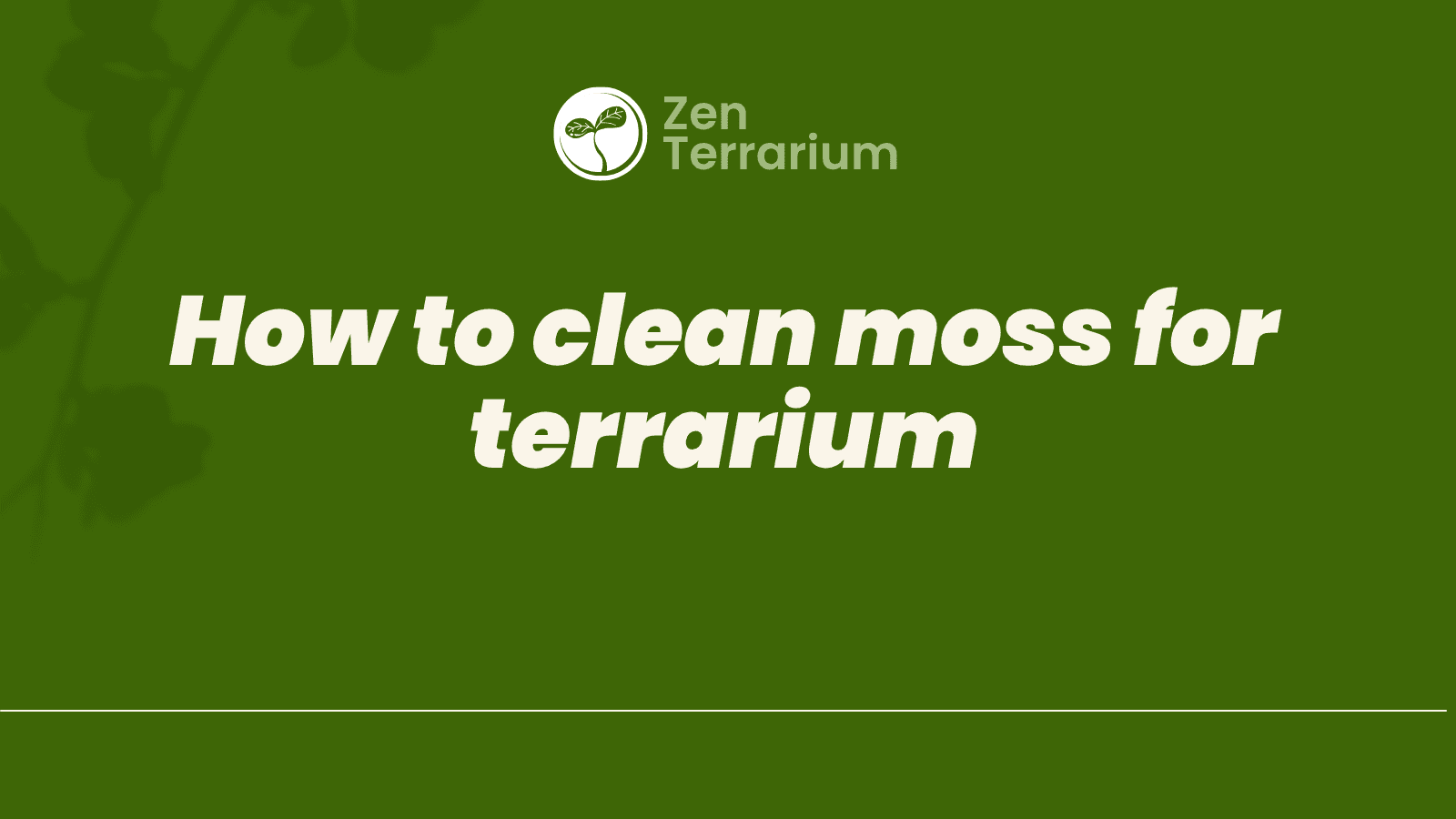Why Clean Moss Before Using It?
Moss collected from the wild or even purchased from nurseries can harbor a surprising number of contaminants. These include:
- Loose soil and organic debris
- Tiny insects or larvae
- Mold spores or fungi
- Chemicals from surrounding environments
If introduced into a closed terrarium without proper cleaning, these contaminants can disrupt the delicate balance, spread disease, or lead to unpleasant odors and decomposition.
Cleaning moss properly doesn’t take much time, but it makes a world of difference in the long-term health of your terrarium.
Step 1: Gather Your Tools
To start, gather the necessary items:
- A clean container or bowl
- Distilled or clean tap water
- Fine mesh strainer or colander
- Tweezers or forceps
- Paper towels or a clean towel
- Optional: a magnifying glass for close inspection
Using clean tools ensures you don’t reintroduce contaminants during the cleaning process.
Step 2: Inspect the Moss Visually
Before wetting the moss, examine it closely. Look for:
- Obvious signs of pests, such as ants, mites, or small larvae
- Dead leaves, grass, or twigs entangled within the moss
- Moldy patches or discoloration
Use tweezers to carefully remove any visible debris or insects. If you spot signs of heavy mold or infestation, it may be better to discard that section of moss entirely.
Step 3: Rinse the Moss Gently With Water
Once you’ve inspected the moss, it’s time to rinse. Rinse the moss gently with water to remove any loose soil, debris, or insects.
Use lukewarm, clean water—distilled if possible, as tap water can contain chlorine or minerals that moss might not appreciate in a sealed environment. Place the moss into the strainer or directly into the bowl and slowly pour water over it.
Avoid blasting it with high-pressure water, as moss is delicate. Let it soak for a few minutes to dislodge soil and tiny bugs. Swish the moss around gently using your hands, then lift it out and let excess water drain.
If needed, repeat the rinse to ensure it’s thoroughly cleaned. You might be surprised at how much dirt comes off in the first rinse alone.
Step 4: Quarantine the Moss (Optional but Recommended)
If you’re especially cautious or using wild moss, quarantine it for a few days in a separate, open container. This helps monitor for any pests that may have escaped the initial cleaning process.
Keep the moss in a well-ventilated area with indirect sunlight and mist it lightly to prevent drying out. If any insects or mold appear during this period, you’ll be glad you kept it isolated from your terrarium.
Step 5: Dry the Moss Slightly Before Planting
You don’t want to place soaking wet moss directly into your terrarium. Lay it out on paper towels or a clean cloth to allow excess water to drain. It should be damp, not dripping, when you place it in the terrarium.
This helps prevent excess humidity, which can lead to mold and rot in a closed system.
Step 6: Final Inspection and Placement
Before placing the moss into your terrarium, give it one final check. Ensure:
- No bugs are crawling on it
- No signs of decay or foul odor
- It feels moist but not soggy
Now it’s ready to be arranged in your terrarium! Use your hands or tweezers to gently press the moss onto the substrate. Depending on your design, you can layer it with stones, charcoal, and soil to create visual depth and environmental balance.
Maintenance Tips Post-Cleaning
Once your moss is part of the terrarium, keeping it clean and healthy is an ongoing process. Here are a few post-installation tips:
- Mist the moss lightly every few days, depending on the humidity level inside the terrarium.
- Keep the terrarium out of direct sunlight to prevent overheating and algae growth.
- Trim the moss occasionally if it becomes overgrown or uneven.
- Open the terrarium lid occasionally (if it’s a closed type) to allow air exchange and prevent mold buildup.
Final Thoughts
Cleaning moss may seem like a minor step, but it plays a critical role in the health of your terrarium. By taking the time to rinse gently with water, remove debris, and inspect for pests, you set a solid foundation for a thriving miniature ecosystem. Moss is a living element, and treating it with care ensures it stays vibrant, lush, and beautiful for months—if not years—to come.
So the next time you prepare to build a terrarium, don’t skip the cleaning phase. Your plants—and your future self—will thank you.
Let me know if you’d like a downloadable version or formatted for a website/blog post.

